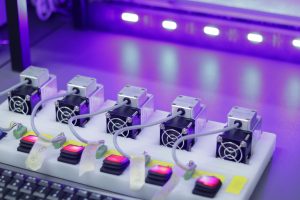Green Driving Habits: Maximizing Efficiency in Any Vehicle
With the increasing awareness of climate change and the need to reduce carbon emissions, more and more individuals are turning to green driving habits. Not only does this help the environment, but it also helps to improve the overall efficiency of our vehicles. By simply adapting our driving practices, we can make a positive impact and contribute towards a greener future. In this article, we will discuss the top green driving habits that can help maximize efficiency in any vehicle.
The Importance of Green Driving Habits
Did you know that transportation is responsible for roughly 14% of global greenhouse gas emissions? This alarming statistic highlights the urgent need to implement greener driving practices. By incorporating eco-friendly habits into our daily commutes, we can reduce our carbon footprint and decrease harmful pollutants in the atmosphere. Moreover, green driving habits can also help improve the overall performance and longevity of our vehicles.
Maximizing Efficiency in Any Vehicle
Whether you drive a gas-powered car or an electric vehicle, there are several techniques you can adopt to drive more efficiently. Here are some green driving habits that can help maximize efficiency in any vehicle:
1. Keep Your Vehicle Well-Maintained
Regular vehicle maintenance is crucial for reducing emissions and improving fuel efficiency. Make sure to keep up with oil and filter changes, tire rotations, and tune-ups. This not only ensures that your vehicle is running smoothly but also helps it to operate at its maximum efficiency. A poorly maintained vehicle can produce more emissions and waste more fuel, so it’s important to take care of your car.
2. Avoid Aggressive Driving
Aggressive driving habits such as speeding, hard braking, and rapid acceleration can significantly decrease your vehicle’s fuel efficiency. According to the Environmental Protection Agency, aggressive driving can decrease gas mileage by up to 33% on the highway and 5% in the city. By practicing smooth and steady driving, you can save on fuel costs and reduce emissions.
3. Plan Your Routes and Optimize Your Trips
Planning your trips beforehand and taking the most direct route can help you save time, fuel, and money. Avoid idling in traffic by optimizing your route and combining multiple errands into one trip. This not only saves on fuel but also reduces emissions and traffic congestion.
4. Use Cruise Control
If your vehicle has cruise control, make sure to use it on long drives. This feature helps to control your speed and maintain a consistent pace, which can improve fuel efficiency. It also prevents unnecessary acceleration and deceleration, which can waste fuel.
5. Avoid Overloading Your Vehicle
The more weight your car carries, the more fuel it consumes. Avoid overloading your vehicle with unnecessary items to improve its efficiency. For every 100 extra pounds of weight, your car’s fuel efficiency can decrease by up to 2%. So, make sure to clear out unnecessary items from your trunk and backseat.
6. Turn Off the Engine When Idle
Idling for more than 10 seconds uses more fuel than restarting your vehicle. If you’re going to be sitting in one place for more than a minute, it’s better to turn off your engine. This can make a significant difference in reducing emissions and improving overall fuel efficiency.
7. Consider Carpooling or Using Public Transportation
One of the best ways to reduce your carbon footprint and save on fuel is by carpooling or using public transportation. This not only decreases the number of vehicles on the road but also helps to reduce traffic congestion and improve air quality. Plus, you can save on gas and vehicle maintenance costs by sharing your commute with others.
The Future of Green Driving
As technology continues to advance, the future of green driving looks promising. More and more eco-friendly vehicles, such as electric and hybrid cars, are being introduced into the market. These vehicles significantly reduce emissions and improve fuel efficiency, making them a great option for the environmentally conscious driver. Additionally, self-driving vehicles and advanced traffic technologies are being developed to further optimize routes and reduce traffic congestion, ultimately reducing carbon emissions.
Conclusion
In conclusion, incorporating green driving habits into our daily practices can make a significant impact on the environment and improve the overall efficiency of our vehicles. By keeping our vehicles well-maintained, avoiding aggressive driving, planning our routes, and using eco-friendly modes of transportation, we can contribute towards a greener and more sustainable future. So, let’s all make a conscious effort to drive green and make a positive impact on the environment.








